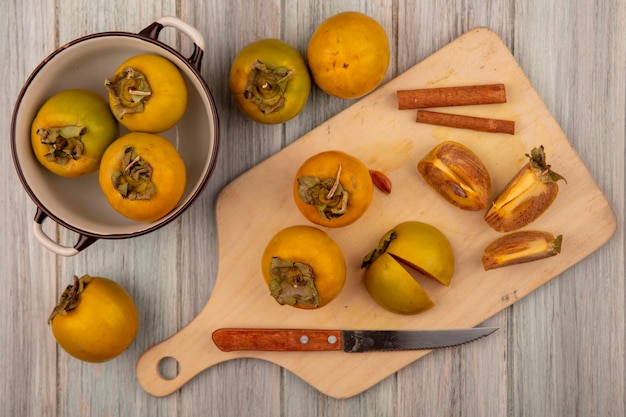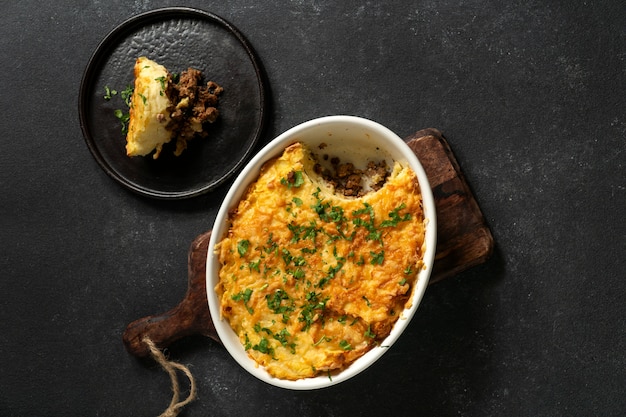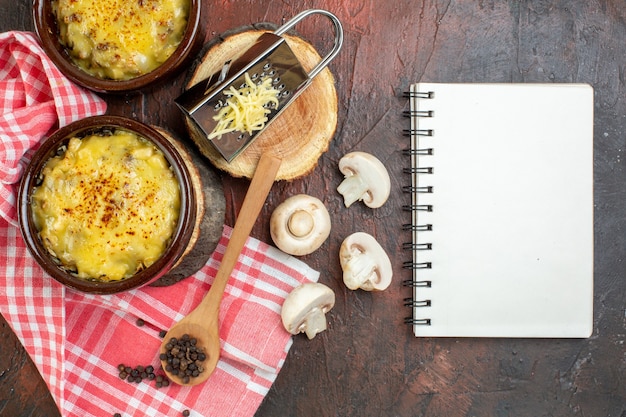As the leaves start to transform into a kaleidoscope of reds, oranges, and yellows, and the air whispers of cooler days ahead, I find myself drawn to the comforting embrace of autumnal flavors. There's nothing quite like the warmth of a hearty squash casserole on a crisp evening. This dish holds a special place in my heart, evoking cherished memories of cozy gatherings with loved ones, the tantalizing aroma of warm spices filling the air, and the satisfying crunch of a golden-brown crust. Over the years, I've meticulously refined this recipe, adding my own personal touches to create a truly irresistible version that's guaranteed to delight even the most discerning palate.
Part 1: The Essential Ingredients

Before we embark on this culinary adventure, let's gather our ingredients. This is where the magic truly begins. I firmly believe that using fresh, seasonal ingredients makes all the difference. So, head to your local farmers' market or grocery store, and stock up on these essential elements that will transform into a symphony of flavors:
1. The Star of the Show: butternut squash
This is the heart and soul of our casserole, providing a naturally sweet and creamy foundation. When selecting your butternut squash, look for a firm, well-shaped specimen, with a smooth, blemish-free exterior. Opt for a squash that's not too large, as it'll be easier to handle and roast evenly.
2. A Dash of Butter: For Richness and Flavor
Unsalted butter is my go-to choice for this recipe. It adds a beautiful depth of flavor and creates that delightful melt-in-your-mouth texture we all crave. Don't be shy with the butter; a generous amount will enhance the overall richness of the casserole.
3. A Symphony of Spices: The flavor enhancers
Here's where we get to unleash our creativity. I'm a firm believer in the power of spices to elevate a dish. I love to use a blend of cinnamon, nutmeg, and ginger. These warm spices complement the sweetness of the squash beautifully, creating a harmonious flavor profile that embodies the essence of autumn. Feel free to experiment with other spices like cloves or allspice, to create your own unique blend that reflects your personal taste preferences.
4. The Crunchy Crunch: Bread Crumbs for Toppings
These will form a golden-brown crust, adding a satisfying textural contrast to the smooth and creamy squash. I prefer to use plain breadcrumbs, but you can explore different options like seasoned breadcrumbs or even crushed crackers for a slightly different flavor profile.
5. A Binding Agent: Eggs and Milk
These ingredients are essential for creating a smooth and creamy filling that binds all the elements together. Use large eggs for the richest flavor, and choose whole milk or a dairy alternative like almond milk, depending on your dietary preferences.
6. The Final Touch: Salt and Pepper
Don't forget these essential seasonings! A pinch of salt enhances the flavors, while freshly ground black pepper adds a subtle kick. Remember, you can always add more later, so start with a light hand and adjust to taste as you go.
Part 2: Preparing the Squash

Now that we have all our ingredients assembled, let's dive into the preparation process. This part is surprisingly simple, and it's a great opportunity to put on some relaxing music and enjoy the process. Here's my preferred method for preparing the butternut squash:
1. The First Step: Halving the Squash
Using a sharp chef's knife, cut the butternut squash in half lengthwise. Remove the seeds and fibrous strands, and discard them. Then, use a spoon to scoop out any remaining seeds or pulp. You can save these seeds to roast for a tasty snack later!
2. The Next Step: Roasting the Squash
Preheat your oven to 400°F (200°C). Place the squash halves cut-side down on a baking sheet lined with parchment paper. Roasting the squash this way helps to concentrate its flavors and create a tender, easily-scoop-able texture. Bake for about 45 minutes, or until the squash is tender and easily pierced with a fork. Let it cool slightly before handling.
3. The Final Step: Scooping Out the Squash
Once the squash is cool enough to handle, use a spoon to scoop out the flesh and transfer it to a large bowl. You can leave the skin on the baking sheet, as we'll use it later for serving.
Part 3: Creating the Filling

Now comes the fun part—creating the creamy and flavorful filling that will make this casserole truly special. Let's get those taste buds tingling!
1. Mashing the Squash: The Base of our Filling
Using a potato masher or fork, mash the roasted squash until it's smooth and creamy. Don't worry about making it perfectly smooth; a few lumps add to the rustic charm of this dish.
2. Adding the Flavor: Butter, Spices, and Salt
Add the butter to the mashed squash and stir until it's melted and incorporated. Then, add your chosen spices (cinnamon, nutmeg, ginger) and a generous pinch of salt. Mix well to distribute the flavors evenly. Remember, you can always adjust the spices later to suit your taste.
3. Incorporating the Eggs and Milk: The Binding Agents
In a separate bowl, whisk together the eggs and milk until they are well combined. Then, gradually pour this mixture into the mashed squash, stirring continuously to create a smooth and creamy consistency. The eggs and milk will help to bind the filling together, ensuring it holds its shape while baking.
Part 4: Assembling the Casserole
We're nearing the final stretch! The next step is to assemble the casserole, getting it ready for its transformation in the oven. Follow these simple steps, and you'll be one step closer to that delicious aroma filling your kitchen.
1. Greasing the Dish: Preventing Sticking
Grease a 9x13 inch baking dish with butter or cooking spray. This will prevent the casserole from sticking and ensure easy cleanup later. A well-greased dish will also help to create a beautiful golden-brown crust.
2. Adding the Filling: The Heart of the Dish
Pour the squash filling into the prepared baking dish, spreading it evenly. Smooth out the top to create a uniform surface. This will ensure that the casserole bakes evenly and creates a consistent texture.
3. Sprinkling the Breadcrumbs: The Crunchy Topping
In a small bowl, combine the breadcrumbs with a pinch of salt and pepper. Sprinkle this mixture evenly over the squash filling, ensuring that the entire surface is covered. This layer of breadcrumbs will form a delicious, golden-brown crust that adds a satisfying textural contrast.
4. Adding the Extra Touch: Optional Additions
If you're feeling adventurous, you can add some extra touches to your casserole. Consider these options that will elevate the flavor and texture:
- Chopped Nuts: Add a handful of chopped walnuts, pecans, or almonds to the top of the casserole for added crunch and flavor. Toasted nuts will provide an extra layer of nutty aroma.
- Dried Cranberries: Sprinkle a handful of dried cranberries over the filling for a sweet and tangy contrast. The tartness of the cranberries complements the sweetness of the squash beautifully.
- Shredded Cheese: For a cheesy twist, sprinkle a layer of shredded cheddar or Gruyere cheese over the breadcrumbs before baking. The melted cheese will create a rich and gooey topping.
Part 5: Baking the Casserole
Now it's time to let the oven work its magic. The anticipation is building as the aroma of warm spices and buttery goodness starts to fill your kitchen. Follow these steps for perfect results:
1. Preheating the Oven: Setting the Stage
Preheat your oven to 375°F (190°C). This will ensure that the casserole bakes evenly and reaches the perfect golden-brown color. A properly preheated oven is crucial for consistent results.
2. Baking the Casserole: The Transformation
Place the casserole in the preheated oven and bake for 30-40 minutes, or until the top is golden brown and bubbly. The exact baking time may vary depending on your oven, so keep an eye on it and check it after 30 minutes. The casserole is ready when the filling is set and the top is beautifully browned.
3. Resting the Casserole: Allowing it to Settle
Once the casserole is baked, remove it from the oven and let it rest for 10-15 minutes before serving. This allows the filling to set and makes it easier to slice and serve. Resting also helps the flavors to meld and intensify.
Part 6: Serving and Enjoying the Casserole
The moment you've been waiting for has finally arrived! It's time to savor the fruits of your labor. Here's how to make the most of your squash casserole experience:
1. Slicing the Casserole: Creating the Perfect Portions
Use a sharp knife to cut the casserole into squares or rectangles, depending on your preference. The casserole should slice cleanly, without crumbling. If the casserole is too hot, let it cool for a few minutes before slicing.
2. Arranging the Casserole: A Beautiful Presentation
Arrange the casserole slices on a serving platter or individual plates. You can garnish with a sprig of fresh thyme or rosemary for an extra touch of elegance. A simple sprig of herbs will add a touch of freshness and visual appeal.
3. Pairing the Casserole: Delicious Accompaniments
This casserole is a perfect accompaniment to a variety of dishes, offering a comforting and flavorful contrast. Here are a few ideas that I find particularly delicious:
- Roasted Chicken or Turkey: The creamy casserole pairs beautifully with roasted poultry, providing a flavorful and comforting contrast. The richness of the casserole balances the savory flavors of the poultry.
- grilled salmon or Fish: For a lighter meal, serve the casserole alongside grilled salmon or other fish, creating a balance of textures and flavors. The creamy casserole adds a touch of decadence to a lighter protein.
- Green Salad: A simple green salad with a light vinaigrette complements the richness of the casserole, adding freshness and a touch of acidity. The salad provides a refreshing counterpoint to the hearty casserole.
4. Savor the Moment: Relishing the Flavor
Now, take a moment to appreciate the flavors and textures of your creation. The sweetness of the squash, the warmth of the spices, the satisfying crunch of the breadcrumbs—it's a symphony of autumnal flavors that will leave you feeling content and satisfied.
Part 7: Tips and Variations
Over the years, I've experimented with this recipe, trying out different variations and tweaks to find the perfect balance of flavors and textures. Here are some of my favorite tips and variations that you can try:
1. Sweetening the Squash: Adding a Touch of Honey
For a slightly sweeter casserole, add a tablespoon or two of honey to the mashed squash while it's still hot. The honey will melt and blend seamlessly with the other flavors, creating a delightful sweetness. Honey adds a touch of natural sweetness and a complex aroma.
2. Adding a Nutty Touch: Toasted Pecans or Walnuts
For an extra layer of flavor and texture, add a handful of toasted pecans or walnuts to the top of the casserole just before baking. The toasted nuts add a nutty aroma and a delightful crunch. Toasting the nuts enhances their flavor and creates a beautiful golden hue.
3. Spicing it Up: Experimenting with Different Spices
Don't be afraid to experiment with different spices to create your own unique blend. Try adding a pinch of cloves, allspice, or even a touch of chili powder for a hint of heat. Spices can add depth and complexity to the flavor profile.
4. Using Different Squash Varieties: Exploring New Flavors
While butternut squash is the classic choice for this casserole, you can experiment with other squash varieties like acorn squash, delicata squash, or spaghetti squash. Each variety will have its own unique flavor and texture, adding a new dimension to your dish. For example, acorn squash offers a slightly nutty flavor, while delicata squash has a delicate sweetness.
5. Making it Vegetarian: Omitting the Eggs
To make this casserole vegetarian, simply omit the eggs. You can use a flax egg or a tablespoon of cornstarch to bind the filling instead. The casserole will be slightly less firm, but still delicious. Flax eggs are a great egg substitute that adds a subtle nutty flavor.
Part 8: Storing and Reheating the Casserole
This casserole is just as delicious the next day, making it a perfect meal prep option. Here's how to store and reheat it:
1. Storing the Casserole: Keeping it Fresh
Allow the casserole to cool completely before storing it in an airtight container in the refrigerator. It will keep well for up to 3-4 days. Storing the casserole properly will help to preserve its flavor and texture.
2. Reheating the Casserole: Restoring its Flavor
You can reheat the casserole in the oven at 350°F (175°C) for 15-20 minutes, or until it's heated through. You can also reheat it in the microwave, but it may become slightly soggy. For best results, cover the casserole with a damp paper towel before microwaving. Reheating the casserole in the oven will help to restore its crispy crust and maintain its texture.
Part 9: FAQs
Here are some frequently asked questions about squash casserole:
1. Can I use canned squash instead of fresh?
Yes, you can use canned squash, but it won't have the same depth of flavor as fresh, roasted squash. If using canned squash, make sure to drain it well before using it. You may also need to add more spices and seasonings to compensate for the lack of flavor. Fresh, roasted squash offers a more intense flavor profile.
2. Can I freeze the casserole?
Yes, you can freeze the casserole for up to 3 months. To freeze, allow the casserole to cool completely, then wrap it tightly in plastic wrap and aluminum foil. When ready to use, thaw overnight in the refrigerator and reheat according to the instructions above. Freezing the casserole is a convenient way to have a quick and delicious meal on hand.
3. How can I make the casserole creamier?
To make the casserole even creamier, you can add a tablespoon or two of heavy cream or sour cream to the filling. These ingredients will add richness and depth to the flavors, making the casserole even more indulgent. The addition of heavy cream or sour cream enhances the creaminess of the casserole.
4. What are some other toppings I can use?
There are many other toppings you can use for this casserole, depending on your preferences. Try adding a sprinkle of chopped herbs like parsley or chives, a handful of crumbled bacon, or even a few dollops of whipped cream for a decadent finish. These toppings add a touch of personalization and enhance the flavor profile.
5. What happens if the casserole is overcooked?
If the casserole is overcooked, the top will be dry and crispy. This isn't necessarily a bad thing, but you may need to add a little more moisture. You can try drizzling some melted butter or heavy cream over the top of the casserole to soften it up. Alternatively, you can serve it with a side of creamy soup or sauce to add moisture. While overcooking can result in a dry casserole, it can be salvaged with a few simple adjustments.
Part 10: Conclusion
There you have it, my tried and true squash casserole recipe! It's a dish that's both comforting and delicious, perfect for any occasion. Whether you're serving it to family and friends on a chilly autumn evening or simply enjoying it as a solo treat, I hope this recipe brings you joy and satisfaction. Remember, you can always personalize it with your own favorite ingredients and spices, making it truly your own.
So, gather your ingredients, preheat your oven, and get ready to create a symphony of flavors that will warm your heart and soul. Happy cooking, and enjoy the wonderful world of autumnal delights!
Everyone is watching

How to Cook Frozen Lobster Tails Perfectly: A Step-by-Step Guide
RecipesLobster. Just the word conjures up images of lavish meals, special occasions, and a taste of luxury. But let's...

Pigs in a Blanket Cooking Time: How Long to Bake for Perfect Results
RecipesAh, pigs in a blanket. Just the name conjures up images of those delightful little parcels of crispy pastry en...

Pork Fillet Cooking Time: How Long to Cook It Perfectly
RecipesPork fillet, or tenderloin as it's sometimes called, is a real favourite in our house. It's so versatile, and...

The Ultimate Guide to Cooking Delicious Frankfurters
RecipesLet's face it, we all love a good frankfurter. It's a classic, simple, and always satisfying. But let's be rea...

Wolf Meat Recipes: A Guide to Cooking Wild Game
RecipesLet's be honest, you don't see wolf meat at your local butcher shop every day. It's a bit of a wild card, but ...
